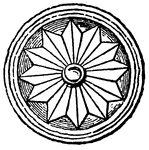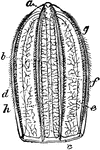
Idyia Roseola
"Idyia roseola. Seen from the broad side, half natural size. a, anal opening; b, lateral tube; c, circular…

Ambulacral System
"Ambulacral system of a starfish. a, ampullae; ap, Polian vesicles; c, circular canal; m, madreporite;…
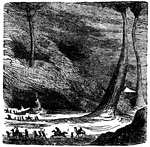
Simoon Storm
Strong dust storms that move in a circular motion. They mostly occur in deserts such as deserts found…
Machinery Rack
A straight or slightly curved metallic bar, with teeth n one of its edge, adapted to work into the teeth…
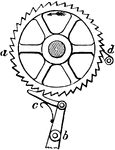
Ratchet Wheel
A wheel with pointed and angular teeth, against which a ratchet abuts, used either for converting a…
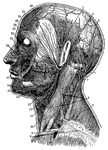
Arteries and Nerves
"Superficial arteries and nerves of the face and neck. 1, Temporal artery; 2, artery behind the ear;…
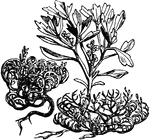
Illustration of Roots and Jericho Rose
A small cruciferous plant, growing in arid Arabia and Palestine. When full grown and ripe its leaves…
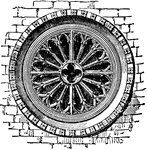
Rose Brickwork Window
A circular window, divided into compartments by mullions and tracery radiating from a centre, also called…

Atoll
"Atoll, a coral reef surrounding a pool of shallow water, usually called a lagoon. The atoll is formed…
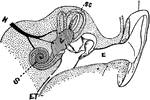
Diagram of the Auditory Apparatus
A diagram of a section of the auditory apparatus. Labels: E, external canal; M, in the middle ear; V,…
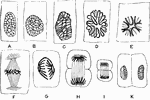
Karyokinesis
Karyokinesis. Labels: a, ordinary nucleus of a columnar epithelial cell; B, C, the same nucleus in the…

Surface View of an Artery
Surface view of an artery from the mesentery of a frog, ensheathed in a perivascular lymphatic vessel.…
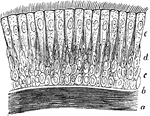
Ciliary Epithelium
Ciliary epithelium of the human trachea. Labels: a, layer of longitudinally arranged elastic fibers;…
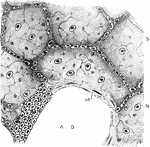
Air Cells from a Cat's Lung
From a section of the lung of a cat, stained with silver nitrate. Labels: A. D., alveolar duct or intercellular…
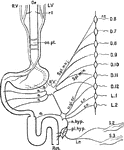
Nerves of the Alimentary Canal
Diagrammatic representation of the nerves of the alimentary canal. Oe to Rct, the various parts of the…

Hepatic Cells and Bile Capilaries
Hepatic cells and bile capillaries, from the liver of a child three months old. Both figures represent…

Corpus Quadrigeminum
Section through anterior corpus quadrigeminum and part of optic thalamus. Labels: s, aqueduct of Sylvius;…

Ciliary Processes of the Eye
Section through the eye carried through the ciliary processes. Labels: 1, Cornea; 2, membrane of Descemet;…
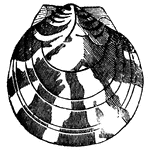
Pecten Pseudamussium (Chenu.)
"The Watered Pecten belongs to the scallop-shells. The shell is generally nearly circular, more or less…
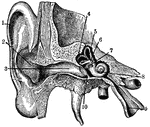
Ear
"Section through right ear. 1, helix; 2, concha; 3, outer passage; 4, 5, 6, semi-circular canals; 7,…

Stomach Turned Inside Out
Stomach turned inside out, showing dissection of oblique and circular muscular coats.
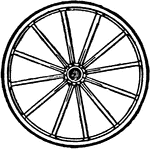
Wheel
A wheel is a circular device that is capable of rotating on its axis, facilitating movement or transportation.
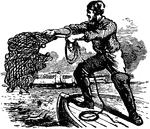
Cast Net
A cast net, also called a throw net, is a net used for fishing. It is a circular net with small weights…
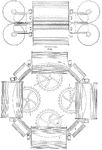
Decorticator
"Decorticator for ramie, jute, hemp, flax, and other textiles in green stalks. The machine is quadruple…

Ruins at Stonehenge
Stonehenge is a prehistoric monument located in the English county of Wiltshire, about 3.2 kilometres…
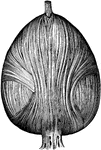
Fibers of the Bladder
The figure on the left shows fibers of the external longitudinal layer. The middle figure shows fibers…

Confederate Rosette and Badge
The Confederate rosette and badge was worn by supporters of the Southern Confederation.
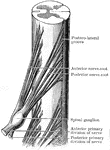
Seventh Dorsal Nerve
Throughout the dorsal region, the spinal cord presents a uniform girth and a very nearly circular outline…

Castle Garden
An illustration of Castle Garden, known today as Castle Clinton or Fort Clinton. Castle Clinton or Fort…
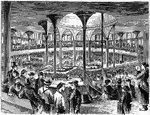
Castle Garden (Interior)
An illustration of the interior of Castle Garden, known today as Castle Clinton or Fort Clinton. Castle…

Circular Plane
With the plane, one can make rough wood true, smooth and beautiful. The name plane, perhaps, comes from…

Stomach Muscles
The three layers of the muscular coat of the stomach. A, Outer or longitudinal layer. B, Middle or circular…

Formation of Pylorus
Diagram to show formation of pylorus. Labels: P, peritoneum; L, longitudinal layer of muscular fibers;…
Pillar
A decorative Egyptian pillar. A pillar is similar to a column which is a vertical support structure…
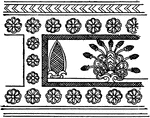
Assyrian Ornament
The purely conventional ornaments — the rosette, guilloche, and lotus-flower, and probably also…
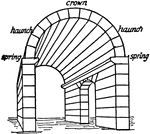
Barrel Vault
A barrel vault, also known as a tunnel vault or a wagon vault, is an architectural element formed by…

Temple of Vesta, Tivoli
The circular so-called "Temple of Vesta" at Tivoli, of the early first century BCE, has been widely…

Formation of Circles of Diffusion
An illustration depicting the formation of circles of diffusion. "From point A luminous rays enter the…
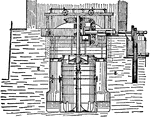
Jonval Turbine
"This turbine was designed to give 1250 H.P. with a fall of 25 ft. and an efficiency of 77%. It is fitted…
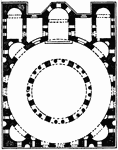
Cathedral at Bosra
Circular and polygonal plans appear in a number of Syrian examples of the early sixth century. Their…
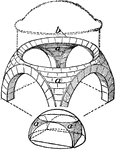
Diagram of Pendentives
A pendentive is a constructive device permitting the placing of a circular dome over a square room or…
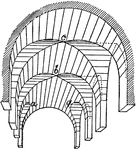
Vaults, Penetrations and Intersections
A: Penetrations by small semi-circular vaults sprung from same level. B: Intersection by small semicircular…
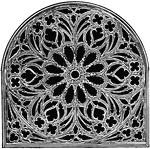
Rose Window, Church of St. Ouen, Rouen
A Rose window (or Catherine window) is often used as a generic term applied to a circular window, but…
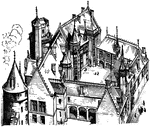
Hotel Jacques Coeur, Bourges
The same gothic principles controlled the designing of houses, farm buildings, barns, granaries, and…

Railway Turntable
"Industrial-railway Turn-table. a, circular base with channel for ball-bearing, showing ring of balls;…

Pillar in Trimal Naik's Tschultri
A pillar is similar to a column which is a vertical support structure in architecture, but the base…
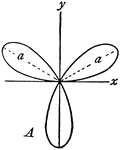
Rose
"In geometry, certain transcendental curves having, in polar coordinates, equations of the form ρ…
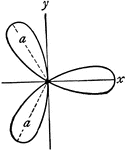
Rose
"In geometry, certain transcendental curves having, in polar coordinates, equations of the form ρ…
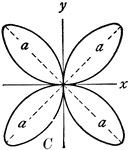
Rose
"In geometry, certain transcendental curves having, in polar coordinates, equations of the form ρ…
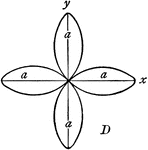
Rose
"In geometry, certain transcendental curves having, in polar coordinates, equations of the form ρ…

Capital in the Temple at Denderah
In some temples the pillars have, in lieu of capital, the face of a goddess, probably of Isis, with…

Capital and Entablature from the Rock Tomb of Darius
The columns in the ruins of Persepolis are circular and slender, and have capitals and bases. The capital…
Restored Capital from the Ruins of Persepolis
Other capitals are more compact, where from the lower part, which is in the shape of a globular vessel,…

Capital from the Ruins of Persepolis
Other capitals are more compact, where from the lower part, which is in the shape of a globular vessel,…
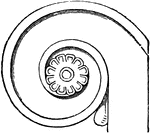
Volute of the Persian Column
Other capitals are more compact, where from the lower part, which is in the shape of a globular vessel,…
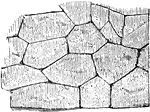
Cyclopean Masonry
Remains of the circular walls round towns and palaces, which are known under the name Cyclopean, exist…
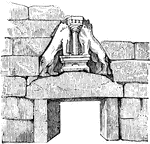
The Lion Gate at Mycenæ
Remains of the circular walls round towns and palaces, which are known under the name Cyclopean, exist…

